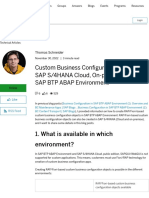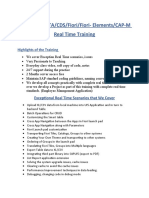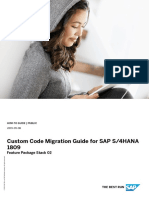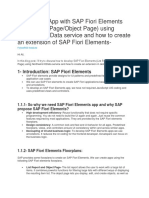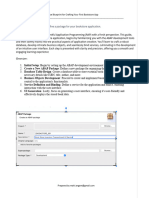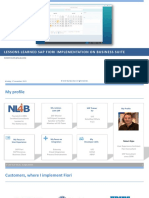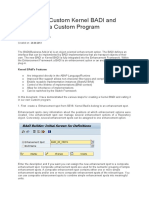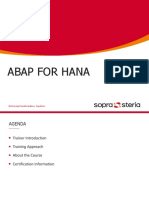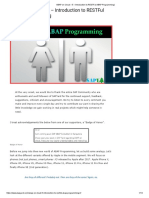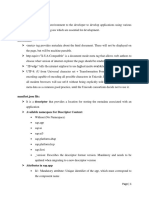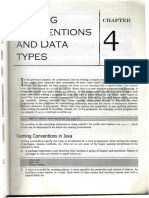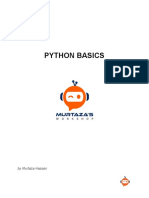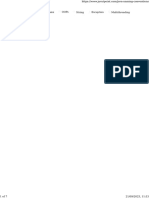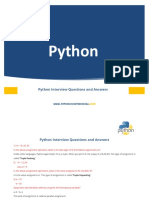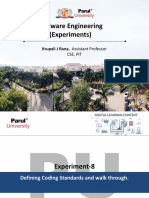0% found this document useful (0 votes)
933 views19 pagesSAPUI5 Guidelines
The document provides coding best practices and naming conventions for developing SAPUI5 applications. It includes 27 sections that cover topics like avoiding global variables, using consistent XML formatting, model view controller patterns, and event handling between controllers using an event bus. Common events and functions are recommended to be shared in a base controller that all other controllers can extend from. CamelCase is suggested for variable, function, and method names while underscores and hyphens are used for private/protected properties and ID names respectively. The document also discusses i18n, commenting code properly, and reducing hard-coded values.
Uploaded by
saravanan ssCopyright
© © All Rights Reserved
We take content rights seriously. If you suspect this is your content, claim it here.
Available Formats
Download as DOCX, PDF, TXT or read online on Scribd
0% found this document useful (0 votes)
933 views19 pagesSAPUI5 Guidelines
The document provides coding best practices and naming conventions for developing SAPUI5 applications. It includes 27 sections that cover topics like avoiding global variables, using consistent XML formatting, model view controller patterns, and event handling between controllers using an event bus. Common events and functions are recommended to be shared in a base controller that all other controllers can extend from. CamelCase is suggested for variable, function, and method names while underscores and hyphens are used for private/protected properties and ID names respectively. The document also discusses i18n, commenting code properly, and reducing hard-coded values.
Uploaded by
saravanan ssCopyright
© © All Rights Reserved
We take content rights seriously. If you suspect this is your content, claim it here.
Available Formats
Download as DOCX, PDF, TXT or read online on Scribd
/ 19







